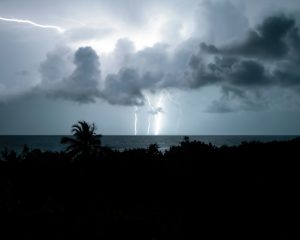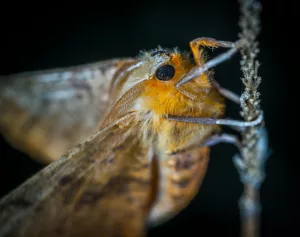Penguins are among nature’s most fascinating creatures, thriving in some of the harshest environments on Earth. From the icy coasts of Antarctica to sub-Antarctic islands, these flightless birds endure freezing temperatures, biting winds, and icy waters. But how do penguins stay warm in such extreme conditions? The secret lies in their extraordinary adaptations, which include specialized feathers, efficient body structure, and remarkable behavioral strategies.
Understanding how penguins maintain their body heat offers a glimpse into the wonders of evolution and the resilience of life in the coldest climates. In this article, we’ll explore the biological, physical, and behavioral mechanisms that allow penguins to survive—and even thrive—amid the ice and snow. From their unique feather structure to their social behaviors, penguins demonstrate a masterclass in insulation and survival.
The Challenges of Extreme Cold
1. The Antarctic Environment
Antarctica is the coldest, windiest, and driest continent on Earth. Winter temperatures in some regions can drop below -60°C (-76°F), and strong winds often exacerbate the cold by stripping away body heat. Penguins, particularly emperor and Adélie species, must endure these brutal conditions as they live and breed on the Antarctic ice.
In addition to the cold air, penguins face the challenge of freezing waters. The Southern Ocean surrounding Antarctica hovers around -1.8°C (28.8°F), below the freezing point of freshwater due to its high salinity. Penguins spend a significant portion of their lives swimming and hunting in this icy water, making effective insulation essential for survival.
2. Heat Loss and Its Dangers
Like all warm-blooded animals, penguins must maintain a stable internal body temperature to survive. For penguins, this means keeping their core temperature at approximately 38°C (100°F). However, the cold environment constantly pulls heat away from their bodies through conduction, convection, and evaporation.
Without proper insulation and heat retention strategies, penguins would lose heat faster than they can produce it, leading to hypothermia and death. This challenge has driven the evolution of specialized adaptations that minimize heat loss while maximizing energy efficiency.
Biological Adaptations for Insulation
1. Specialized Feathers
Penguins’ feathers are their first line of defense against the cold. Unlike most birds, penguins have densely packed, overlapping feathers that provide a waterproof and windproof barrier. On average, penguins have about 100 feathers per square inch, creating a thick, uniform coat that traps warm air close to their bodies.
The feathers are coated with a layer of natural oil secreted by the uropygial gland, located near the base of the tail. This oil repels water, keeping the feathers dry and reducing heat loss when penguins dive into icy waters. Additionally, penguins’ feathers are short and stiff, which helps them maintain their streamlined shape and reduces drag while swimming.
2. Fat Layer
Beneath their skin, penguins have a thick layer of fat, also known as blubber, that provides insulation against the cold. This fat layer acts as a thermal barrier, preventing body heat from escaping and protecting the penguins’ internal organs from freezing temperatures. The blubber is particularly important during long swims in freezing water, where heat loss through conduction is a significant risk.
Penguins accumulate this fat layer by consuming high-fat diets, primarily consisting of fish, squid, and krill. During the breeding season or molting periods, when food is scarce, penguins rely on their fat reserves to sustain both their energy needs and insulation.
3. Counter-Current Heat Exchange
Penguins possess a physiological adaptation known as counter-current heat exchange, which minimizes heat loss in their extremities. This mechanism works by allowing warm blood flowing from the body’s core to transfer heat to the cold blood returning from the extremities. As a result, the temperature of blood in the feet, flippers, and beak is lower than the core temperature, reducing the amount of heat lost to the environment.
This adaptation ensures that vital organs remain warm while conserving energy. It’s particularly important for penguins standing on ice or swimming in freezing water, where extremities are in direct contact with the cold environment.
Behavioral Strategies for Staying Warm
1. Huddling Together
One of the most iconic behaviors associated with penguins is huddling. Emperor penguins, in particular, are known for forming large, tightly packed groups during the Antarctic winter. By huddling, penguins share body heat and reduce exposure to the cold wind. The temperature within a penguin huddle can rise significantly, creating a warm microenvironment that helps conserve energy.
Interestingly, penguins in a huddle take turns occupying the colder outer edges and the warmer interior. This rotation ensures that all members benefit from the collective warmth, demonstrating a remarkable level of cooperation and social coordination.
2. Minimizing Heat Loss Through Posture
Penguins reduce heat loss by adopting specific postures. For example, they often tuck their heads into their shoulders and keep their flippers close to their bodies, minimizing the surface area exposed to the cold. When standing on ice, penguins may rock back on their heels, reducing contact between their feet and the freezing surface.
These simple but effective behaviors help penguins conserve heat and maintain their body temperature, even in subzero conditions.
3. Timing of Activities
Penguins also time their activities to reduce exposure to extreme cold. For instance, many penguins breed and lay eggs during the Antarctic summer, when temperatures are relatively milder, and food is more abundant. By timing their breeding season strategically, penguins ensure that their chicks hatch during periods of optimal conditions for survival.
Similarly, penguins may adjust their foraging schedules to avoid the coldest times of the day, conserving energy and minimizing heat loss.
Unique Adaptations Across Penguin Species
1. Emperor Penguins
Emperor penguins are the largest penguin species and have the most extreme adaptations for surviving the Antarctic winter. Their large size reduces heat loss due to a lower surface-area-to-volume ratio, while their dense feather coat and thick blubber layer provide exceptional insulation. Emperor penguins are also the only penguin species to breed during the Antarctic winter, relying on huddling and their incredible fat reserves to protect their eggs and chicks.
Male emperor penguins incubate their eggs on their feet, covered by a brood pouch, for months without eating, enduring temperatures as low as -40°C (-40°F). Their ability to conserve energy and stay warm during this period is a testament to their remarkable adaptations.
2. Adélie Penguins
Adélie penguins, another Antarctic species, rely on their compact body shape and dense feathers to withstand the cold. These penguins are highly social, often forming large colonies that provide additional protection against the elements. Adélie penguins are also excellent swimmers, using their streamlined bodies and insulating blubber to thrive in icy waters.
During the breeding season, Adélie penguins build nests from rocks to keep their eggs off the frozen ground, reducing heat loss and improving hatching success.
3. Sub-Antarctic Penguins
Penguins that live in sub-Antarctic regions, such as king and gentoo penguins, face milder conditions but still rely on many of the same adaptations for insulation. These species have thick feather coats, blubber layers, and counter-current heat exchange systems that enable them to navigate cold waters and windy shorelines.
Unlike their Antarctic counterparts, sub-Antarctic penguins often forage in open ocean waters, where their insulating features protect them from prolonged exposure to the cold.
Conclusion
Penguins are masters of survival in the coldest climates, relying on a combination of biological adaptations, physical features, and behavioral strategies to stay warm. From their specialized feathers and insulating blubber to their social behaviors like huddling, penguins have evolved a remarkable set of tools to endure the extreme cold of their environments. Each species has tailored these adaptations to suit its unique habitat, showcasing the incredible diversity and ingenuity of nature.
Understanding how penguins stay warm not only highlights the wonders of evolution but also underscores the importance of conserving their habitats. As climate change and human activities threaten the icy ecosystems penguins call home, protecting these remarkable birds and their environments is more critical than ever. By learning from and safeguarding these resilient creatures, we can ensure that they continue to thrive for generations to come.




